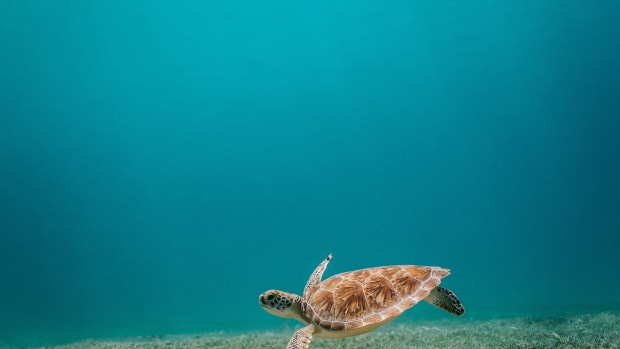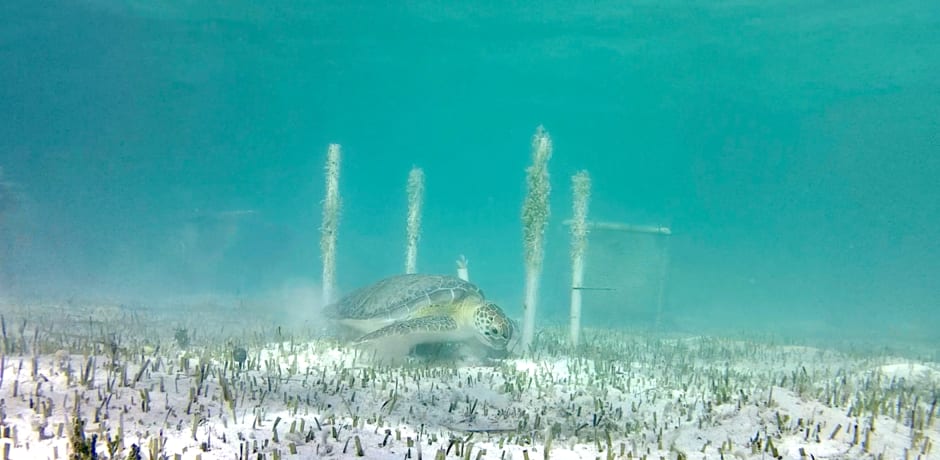
The sea turtle is back, but the ocean floor is overgrazed
The sea turtle has been doing well again for the past 20 years. So well, in fact, that in some places it is overgrazing seagrass beds. Scientists from the UvA and WUR, among others, published an article on this in the scientific journal Global Change Biology.
The sea turtle is back. Thanks to the ban on hunting and many turtle sanctuaries, it is doing well again in many places.
Sea turtles are huge creatures and are called the herbivores of the ocean. With the increase in their numbers, the animals are eating the seagrass beds in coastal zones bare. Says UvA marine biologist Arie Vonk: “A little grazing is good, but not too much. It is important for the turtle to be present in the system, but if the seagrass is eaten too much it is no longer able to recover.”

Ecosystem services
Vonk worked with a team of researchers led by Wageningen University with colleagues from the Netherlands and the Caribbean. They took measurements in the Caribbean and also temporarily excluded sea turtles from the seagrass field with cages. They combined those data with data on the global occurrence of sea turtles.
The scientists examined what the return of the turtle does to the “ecosystem services” of the seagrass beds. These beds provide good water quality, nutrient recycling, sequester carbon, and provide shelter for young fish and shrimp. The roots of the eelgrass also stabilize the coastal zone. An average grazed seagrass field is the best situation for ecosystem services.
(Continue reading below the image.)

Charisma
For the sea turtle to regain balance with its habitat, two things are needed: more seagrass beds and fewer sea turtles. The construction of ports and activity in coastal zones have already reduced the seagrass beds. These need to be better protected. And the sea turtle's natural enemy, the shark, must return.

The moment there are predators in the ecosystem, not only does the sea turtle population grow more slowly, but they also adjust their grazing and foraging behavior, Vonk explains. “If there is no enemy, they can lie in the seagrass patch and keep eating all day long. But if a predator comes by, they have to move to another area. That way they disperse the population. This also prevents overgrazing.”
The shark has fared even worse than the sea turtle. “The turtle is an animal with a certain charisma or attraction,” says Vonk. '“That's not true of the shark.”
But the shark is as important as the turtle to the ecosystem. '“An ecosystem has so many different interactions. We pick out one species to save that we think is cute, fun and appealing. A lot of money is pumped into that effort. However, when you bring the animal back, it returns to a system where a lot has changed. It is going to burden its environment.”
Putting a stop to shark fishing is the first solution, according to Vonk. “Then those populations can start to recover and you may not even have to actively breed them.”

